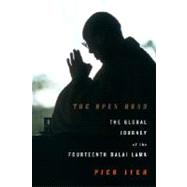
Pico Iyer is the author of six works of nonfiction and two novels. He has covered the Tibetan question for Time, The New Yorker, The New York Times, The New York Review of Books, and many other publications for more than twenty years.
| In Public | |
| The Conundrum | p. 5 |
| The Fairy Tale | p. 33 |
| The Icon | p. 55 |
| In Private | |
| The Philosopher | p. 85 |
| The Mystery | p. 111 |
| The Monk | p. 143 |
| In Practice | |
| The Globalist | p. 167 |
| The Politician | p. 207 |
| The Future | p. 243 |
| Reading | p. 261 |
| In Gratitude | p. 269 |
| Table of Contents provided by Blackwell. All Rights Reserved. |
The New copy of this book will include any supplemental materials advertised. Please check the title of the book to determine if it should include any access cards, study guides, lab manuals, CDs, etc.
The Used, Rental and eBook copies of this book are not guaranteed to include any supplemental materials. Typically, only the book itself is included. This is true even if the title states it includes any access cards, study guides, lab manuals, CDs, etc.
Excerpted from The Open Road: The Global Journey of the Fourteenth Dalai Lama by Pico Iyer
All rights reserved by the original copyright owners. Excerpts are provided for display purposes only and may not be reproduced, reprinted or distributed without the written permission of the publisher.